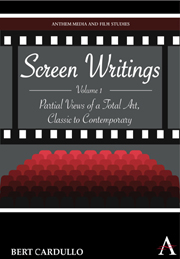Book contents
- Frontmatter
- Contents
- List of Illustrations
- Introduction: The Necessary Film
- Part I Children and the Cinema
- Part II Literature and Adaptation
- Part III Views and Interviews
- 6 Married to the Job: Ermanno Olmi's Il posto and I fidanzati Reconsidered
- 7 Reflecting Reality—and Mystery: An Interview with Ermanno Olmi
- 8 Lower Depths, Higher Planes: On the Dardennes' La Promesse, Rosetta, The Son, and L'Enfant
- 9 The Cinema of Resistance: An Interview with Jean-Pierre and Luc Dardenne
- Part IV World Enough and Time
- Bibliography of Related Criticism
- Index
- Plate section
6 - Married to the Job: Ermanno Olmi's Il posto and I fidanzati Reconsidered
from Part III - Views and Interviews
Published online by Cambridge University Press: 05 March 2012
- Frontmatter
- Contents
- List of Illustrations
- Introduction: The Necessary Film
- Part I Children and the Cinema
- Part II Literature and Adaptation
- Part III Views and Interviews
- 6 Married to the Job: Ermanno Olmi's Il posto and I fidanzati Reconsidered
- 7 Reflecting Reality—and Mystery: An Interview with Ermanno Olmi
- 8 Lower Depths, Higher Planes: On the Dardennes' La Promesse, Rosetta, The Son, and L'Enfant
- 9 The Cinema of Resistance: An Interview with Jean-Pierre and Luc Dardenne
- Part IV World Enough and Time
- Bibliography of Related Criticism
- Index
- Plate section
Summary
One of the most unusual aspects of the Italian cinema of the late '50s and the '60s is the way in which it affords us multiple perspectives on the same event, namely the economic boom following the postwar recovery. Whereas the directors of the French New Wave each created a unique poetic universe, Italian cinema of the same period feels like a series of moons circling around one planet. Again and again, one encounters the identical sociological material, whether filtered through Michelangelo Antonioni's exacting nihilism, Luchino Visconti's luxurious emotionalism, Dino Risi's comic exuberance, or Valerio Zurlini's stirring sobriety. Over and over, one sees the same construction sites, quick-stop cafés, barren roadsides, and cramped apartments (owned by noisy, nosy landladies) that were constants of postwar Italian society. Most strikingly of all, these films feature a parade of young men outfitted in regulation white-collar attire yet betraying their essential inexperience – of the world itself as well as the work-world. That is, they are ill-equipped for a life of work and responsibility in a mechanized, high-efficiency world, and consequently they are lonesome for the nurturing comforts of home.
Of all the talented filmmakers who visited this particular terrain, none responded more soulfully than Ermanno Olmi (born 1931).
- Type
- Chapter
- Information
- Screen WritingsPartial Views of a Total Art, Classic to Contemporary, pp. 89 - 98Publisher: Anthem PressPrint publication year: 2010



